The Law of Love
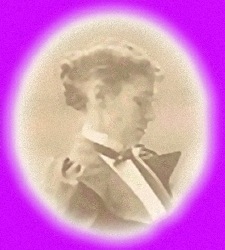
“All disease, all unhappiness, come from the violation of the law of love. Man’s boomerangs of hate, resentment and criticism, come back laden with sickness and sorrow. Love seems almost a lost art, but the man with the knowledge of spiritual law knows it must be regained, for without it, he has “become as sounding brass and tinkling cymbals.”
–Florence Scovel Shinn (American Artist, Metaphysics Teacher and Author, 1871-1940)
The First of All Liberties
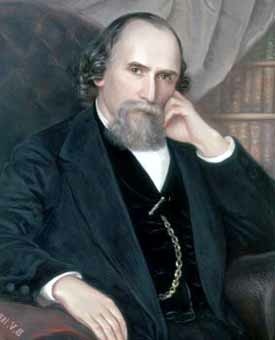
Why do we focus on health and wellness as the first building block of personal freedom?
“In health there is freedom. Health is the first of all liberties.”
–Henri-Frederic Amiel (Swiss Philosopher, Writer and Poet, 1821-1881)
Writing and Rewriting Your Own Life Story
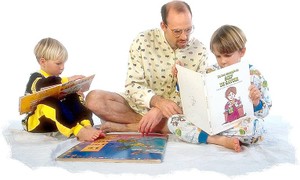
I had the privilege of being on the Donna Seebo show yesterday. And when I say that it was a privilege, it really was. It is not often that I find someone who so fully understands the power of an Integrated approach to health and medicine. Toward the end of the call an interesting question came up about the value of journal writing in healing. I am a firm believer in it, I recently reviewed a terrific book by Sheppard Kominars on the topic and I have published a reading list on Amazon.
There is some empirical research to show that journal writing can improve our physical and mental health (1, 2, 3, 4). Why should this be?
One of our most fundamental and enduring needs is to tell people our stories. And even more than that: to leave our stories as the records of our lives. Our stories define us. They are the vehicles of meaning and they serve as the narrative of our views about our world and ourselves. And our stories create our legacy. We all constantly tell stories that shape virtually every human activity from our emotions to our personal relationships and our politics.
It has clear evolutionary advantages to be able to tell good stories, not only for social cohesion, but also as a device to pass on wisdom. But perhaps most of all, storytelling is a device to help us make sense of the world about us.
Jerome Bruner has indicated that children acquire language in order to tell the stories that are already in them. We learn through story telling. The brain breaks down when we no longer manage to make sense of the world around us. Patients with schizophrenia seem to lose the ability to tell a coherent story about themselves or about the world around them.
I am reminded of the tragic letter written by Dimitri Koesnikov, the young Russian submariner on the Kursk who continued to write a letter to his wife, even when he knew that death was inevitable, or the passengers on the Japanese jet liner that crashed in 1985. As the plane went down, people were writing letters. Or people in the Warsaw ghetto who wrote letters and poems even when they knew that they only had minutes to live.
Writing our stories introduces another dynamic: most of us find that putting out thoughts and feelings down on paper helps to give us mental and emotional clarity. Writing helps us to express our individuality and to make connections with others.
Our memories are not just videos of our life events; they are dynamic and malleable and are constantly being edited. So we can change our stories, and with that, remove some of the restrictions that they have imposed upon us. This is not an invitation to enter into a fantasy world or to start lying to yourself or to other people, but is instead an incredibly valuable tool to clear some of the blocks I our lives.
It is a good practice to think through your stories every day. If you care to write about them, that is even better. We need to answer the question: “What are the stories that have defined who you are and how you act?”
When we think about our relationships, isn’t it true that the ones that matter the most and have the most emotional charge attached to them are those in which our stories are intertwined? How often have you met an old friend, after a gap of many years, and found that you no longer have much to talk about, because your stories have diverged so far? How many people maintain family relationships even when their respective stories have nothing in common? Maintaining a relationship out of duty is unfair and disingenuous. Either the stories need to be repaired, or the relationship is doomed.
As an exercise, I would like you to examine some of the dominant stories that have determined some of your personality and your character. And I would then like you to write a brief story about how you would like your life to be.
To help you get started, let me make some suggestions:
• What is your favorite type of story?
• What is the first story about your family that you remember hearing?
• What are your favorite stories about yourself as a child?
• What are your favorite stories about yourself as an adult?
• Who are the key characters in your life story?
• How many of the key characters know each other?
• Does your life story have a plot line?
• Could you create a better one?
• What stories would you like others to tell about you?
• How would you like your story to end?
I would love to have some feedback if you find this helpful.
“A man’s mind is hidden in his writings; criticism brings it to light.”
–Solomon ben Yehuda ibn Gabirol (Spanish-Hebrew Poet, Neoplatonist Philosopher and Mystic, c.1021-c.1058)
“Writing is a form of therapy; how do all those who do not write, compose, or paint manage to escape the melancholia, the panic and fear which is inherent in the human condition?”
–Graham Greene (English Writer, 1904-1991)
Unhealthy America
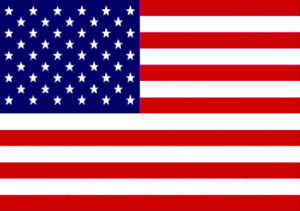
The Milken Institute has released an impressive study that shows the heavy economic burden chronic disease places on our nation. “An Unhealthy America: The Economic Burden of Chronic Disease” shows the current treatment costs of seven chronic diseases – cancers, diabetes, heart disease, hypertension, stroke, mental disorders and pulmonary conditions – as well as the economic impacts of lost workdays and lower employee productivity. It gives a breakdown across all 50 states and the nation as a whole. The study finds that the annual economic impact on the U.S. economy of the most common chronic diseases is more than $1 trillion, and projects that the figures could reach nearly $6 trillion by the middle of the century.
Though some of the blame for this burden can be blamed on stress and environmental factors, much more of it is a direct consequence of our lifestyle choices interacting with our genes. Most of us are failing to renew, refresh and replenish ourselves, and it is important to recognize that whenever we start debating the costs of health care in the United States.
Integrated Health is based on tailored systems to help people care for themselves by going way beyond diet and exercise, and addressing the psychological, social, cultural, subtle and spiritual components of health and wellness. Healing, Meaning and Purpose is a detailed roadmap for creating the life that you deserve, and we are going to be rolling out a new series of teleseminars and workshops in the New Year.
Empowerment

It is sometimes frustrating to see peoples’ medical problems reduced – incorrectly – to a single factor. Worse yet, failing to see that all the systems of the body, the mind, our relationships, environment and spirituality all have a part to play in the maintenance of our health and the treatment of disease.
I grew up in England and benefited from and then trained and worked in the National Health Service. Which is nothing of the sort: it is a disease management service.
The problem lies not with money or inefficient systems, but with an emphasis on management rather than prevention of disease.
The next revolution in healthcare is not being driven by science and technology, but by empowerment: being given the tools for taking personal responsibility for our own health and well-being.
Not just so that we feel better and may have the chance of avoiding costly medicines, but so that we can grow as individuals.
The ultimate goal of any form of personal development, of psychotherapy and indeed of medicine, is to remove restrictions from people.
Freedom unlocks human potential.
We are inundated with information about health. Much of the information is confused and confusing. Integrated Medicine is based on the idea of integrating different approaches and integrating the different parts of a person and all of his or her relationships form cell to soul.
The key to that is understanding how to fit all the pieces together, whether a person is a Buddhist or a Baptist, a meat-eater, vegan or junk food addict. To be able to answer these kinds of questions:
- What diet is right for me personally?
- What type of exercise should I do at my age, level of fitness and time constraints?
- How can I get the quality sleep that I need with all the demands on my time?
- How can I manage the stress in my life?
- How can I manage my emotions so that I run them instead of them running me?
- How can I have satisfying connections with other people?
- How can I find my meaning and purpose in life?
The good news is that we already have answers to most of those questions and we have developed hundreds of tips and techniques that people can do in minutes a day.
I revealed some in the book and CD series Healing, Meaning and Purpose, and in response to a great many requests, I shall be sharing many of these techniques in the months to come.
“Health is a state of complete harmony of the body, mind and spirit. When one is free from physical disabilities and mental distractions, the gates of the soul open.”
–B.K.S. Iyengar (Indian Yoga teacher, 1918-)
“If we could learn how to balance rest against effort, calmness against strain, quiet against turmoil, we would assure ourselves of joy in living and psychological health for life.”
–Josephine L. Rathbone (American Sports Physiologist and Pioneer in Health and Relaxation, 1899-)
“Personal transformation can and does have global effects. As we go, so goes the world, for the world is us. The revolution that will save the world is ultimately a personal one.”
–Marianne Williamson (American Author, Unity Church Minister and Lecturer on Spirituality, 1952-)
“Questions focus our thinking. Ask empowering questions like: What’s good about this? What’s not perfect about it yet? What am I going to do next time? How can I do this and have fun doing it?”
–Charles Connolly (American Psychologist)
Prayer and Healing
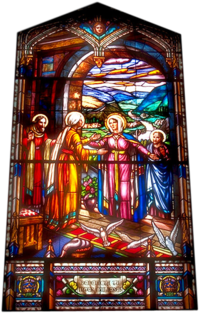
We have already talked a little about the associations between active, healthy spirituality and psychological and physical well-being.
Yet another study has highlighted the connection, showing that breast cancer patients who pray in online support groups can obtain mental health benefits.
Researchers from the University of Wisconsin-Madison Center of Excellence in Cancer Communications Research did the study that was that was funded by the National Cancer Institute.
The research looked at message transcripts from 97 breast cancer patients participating in an online support group that was integrated with the Comprehensive Health Enhancement Support System (CHESS) “Living with Breast Cancer” program, a computer-based health education and support system. The patients were recruited from Wisconsin and Michigan.
Surveys were administered before group access and then again four months later. Text messages within the computer-mediated support groups were analyzed using a text analysis program that measured the percentage of words that were suggestive of religious belief and practice (e.g., pray, worship, faith, holy, God). Writing a higher percentage of these religious words within the online support groups was associated with lower levels of negative emotions and higher levels of self-efficacy and functional well-being, even after controlling for patients’ pre-test levels of religious beliefs.
One of the researchers had this to say:
“From a psychological standpoint, there are a variety of reasons why cancer patients may benefit from prayer – whether on the Internet or elsewhere. In reviewing the messages, some of the most common ways study participants used religion to cope with their illness included putting trust in God about the course of their illness and consequently feeling less stressed, believing in an afterlife and therefore being less afraid of death, finding blessings in their lives and appraising their cancer experience in a more constructive religious light.”
And that is, of course, one set of explanations for the findings.
Or perhaps, as we have seen before, there is a growing body of research to indicate that prayer is effective.
We just have to expect it to be effective. And isn’t that faith?
“Prayer, like radium, is a luminous and self-generating form of energy.”
–Alexis Carrel (French-born American Surgeon, Experimental Biologist and, in 1912, Winner of the Nobel Prize for Medicine or Physiology, 1873-1944)
“Too often we see prayer as a last resort rather than as our first thought. People will say, “I guess all we can do now is pray!” like that’s the last thing, horrible thing to do. And your friend says, “Has it come to that?! Is it so hopeless that all we can do is pray?”
–Rick Warren (American Evangelist and Author, 1954-)
“Though God knows all our needs, prayer is necessary for the cleansing and enlightenment of the soul.”
— John Sergieff of Kronstadt (Russian Priest who, in 1882, Established the House of Industriousness, 1829-1909)
“Man often thinks that, as God is the knower of the heart, there can be no need of any recital or gesture in prayer: but that it would surely be sufficient if he were to sit in the silence and think of God. But this is not so; it is according to the extent of a man’s consciousness of prayer that his prayer reaches God.”
–Hazrat Inayat Khan (Founder of the Sufi Order of the West, 1882-1927)
“Through prayer, the love of God grows and assumes a form which is called supreme devotion. Forms vanish, rituals fly away, books are superseded, images, temples, churches, religions and sects, countries and nationalities – all these little limitations and bondages fall off by their own nature from him who knows this love of God.”
–Swami Vivekananda (Indian Hindu Mystic and Spiritual Teacher, 1863-1902)
“Prayer is part of man’s original nature. He can never be satisfied with merely meditative religion, and naturally and involuntarily inclines to move on to the religion of prayer.”
–Toyohiko Kagawa (Japanese Christian Anti-War Campaigner, 1888-1960)
“All true prayer somehow confesses our absolute dependence on the Lord of life and death.”
Thomas Merton (French-born American Trappist Monk and Writer, 1915-1968)
“There is a relationship between prayer and action. Receptive prayer results in an inner receiving, which motivates to right action.”
— “Peace Pilgrim” (a.k.a. Mildred Norman, American Peace Activist, 1908-1981)
Of Horses and Hearts
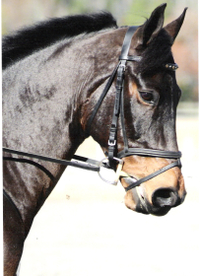
I live on a horse farm, so I see the interactions between horses and between horses and humans almost every day. Horses are extraordinarily sensitive creatures with their own sets of emotions and highly developed sense of propriety. They are also very good barometers for the emotional states of humans. We could not work out why one of the horses at another farm was consistently bratty with one particular rider, until we discovered that she was high on ecstasy. Her “energy” was a mess and it totally confused the horse.
On the other hand, horses are often used therapeutically with emotionally and mentally ill and handicapped children and adults. My old horse – Mr. Black – was a perfect therapy horse: nothing ever fazed him.
There is now some more research demonstrating one of the possible mechanisms by which horses may be able to pick up on a rider’s emotional states.
I have a couple of times mentioned some of the work being done at the Institute of HeartMath in California.
Some of their work is controversial, but most has been quite convincing.
I have for several years now been interested in the phenomenon of Heart Rate Variability (HRV). As the name implies, it is a measurement of the beat-to-beat variation in the heart’s rate. Alteration (primarily reductions) of HRV has been reported to be associated with various pathologic conditions like hypertension, hemorrhagic shock, and septic shock. It has found its role as a predictor of mortality after an acute myocardial infarction. It may also be disturbed in major depressive disorder.
I knew about it from the days that I worked at the National Heart Hospital in London, but Roger Callahan – the discover of Thought Field Therapy (TFT) – has been able to show that TFT is one of the few therapies that can normalize it. We also discussed it in the context of the vagal nerve and compassion.
From a pilot study by the Institute and Dr. Ellen Gehrke from Alliant University it appears that a horse’s heart rhythms reflect their emotional state and can respond to the emotional state of a nearby human. When in contact, a horse’s heart rate may mirror a human’s emotions, implying a close unspoken form of communication between the two.
The study took place at Dr. Gehrke’s ranch in San Diego, where electrocardiogram (ECG) recorders were placed on her and also on four of her horses. All five were monitored during a 24-hour period in which the horses were under a variety of normal conditions and activities such as eating, grooming or being alone. Measurements were also done while they were being ridden and accompanied by Dr. Gehrke.
The ECG recorders projected increased coherent HRV patterns for the horses during times of close, calm contact between them and Dr. Gehrke. Coherent HRV patterns have been shown to be the result of positive emotions and facilitate brain function.
Dr. Gehrke said, “Horses receive information from body language and give feedback. They don’t think very much, they feel. They are very emotional and honest. They also have a powerful impact on your sense of self and ability to lead.”
I don’t think that cardiac coherence is the whole story. They also respond to micro-movements – small movements of the legs, arms and trunk that are all but imperceptible to humans – and we have seen many of them sense events at long range. I travel a great deal and come home at odd times. But several witnesses saw Mr. Black start to become very excited 20-30 minutes before I would arrive home. In England, Rupert Sheldrake has amassed a considerable body of evidence to support those observations.
Nonetheless, this is very important research and I shall be very interested to see the final version once it has been subject to peer review.
“There is something about the outside of a horse that is good for the inside of a man.”
–Sir Winston Churchill (English Statesman, British Prime Minister, 1940-1945 and 1951-1955, and, in 1953, Winner of the Nobel Prize in Literature, 1874-1965)
“A man on a horse is spiritually as well as physically bigger than a man on foot.”
–John Steinbeck (American Writer and, in 1962, Winner of the Nobel Prize in Literature, 1902-1968)
“Wherever man has left his footprint in the long ascent from barbarism to civilization we will find the hoofprint of the horse beside it.”
–John Moore (American Man of Letters and Former Archivist and Librarian for the State of Tennessee, 1858-1929)
“I’d rather have a goddam horse. A horse is at least human, for God’s sake.”
–J.D. Salinger (American Writer, Student of Advaita Vedanta and Recluse, 1919-)
And finally:
“In my opinion, a horse is the animal to have. Eleven-hundred pounds of raw muscle, power, grace, and sweat between your legs – it’s something you just can’t get from a pet hamster!”
–Unknown Author
Communicating About Complementary and Alternative Medicine
Two of the key points about Integrated Medicine are transparency and integration of different approaches.
It is true to say that all healing is ultimately self-healing, but at the heart of healing lies relationship: how we communicate with every part of ourselves, with other people and with our health care providers. At the most mundane level, there is published data that if a health care provider has a good relationship with the person coming to them for help, the chance that the person will follow through on a treatment plan is four times higher than if they meet a health care provider who just grunts at them.
There is also a magic that can happen in strong, dynamic relationships based on partnership rather than dominance: one of the themes of Healing, Meaning and Purpose.
It worried, but did not surprise me to see a study released today.
Most Americans age 50 and older use complementary and alternative medicine (CAM), such as supplements, herbal products or acupuncture. The trouble is that – according to a survey conducted by AARP and the National Center for Complementary and Alternative Medicine – they often do not tell their doctors or nurses.
It is very much in person’s best interests to tell their doctor about the CAMs that they are taking because some unorthodox medicines may interfere with over-the-counter medications, prescription drugs, or other conventional medical approaches. See here for an example of some herbal remedies and supplements that may interact with psychotropic medicines.
As the report says, "Communication between patients and physicians about CAM and conventional therapies is vital to ensuring safe, integrated use of all health care approaches."
It goes on to say something that we have been preaching for years: an open dialog "allows patients and physicians the opportunity to identify CAM practices that might be beneficial and also minimizes risks to a patient from potential therapy interactions."
Among a total of 1,559 individuals age 50 and older surveyed in the spring of 2006, 63 percent reported having used one or more CAM therapies.
According to the survey – which can be found here – people between the ages of 50 and 59 are the most likely to report CAM use.
Forty-five percent of CAM enthusiasts used massage therapy, chiropractic manipulation or other bodywork; 42 percent used herbal or dietary supplements; 15 percent used mind/body practices, including hypnosis and meditation; 14 percent used naturopathy, acupuncture, or homeopathy; and 10 percent had tried energy therapies.
Sixty-six percent of CAM users said they did so to treat a specific health problem; 65 percent for overall wellness; 45 percent to supplement conventional medicine; and 42 percent to prevent illness.
Sixty-nine percent of those who reported using CAM had not discussed it with a doctor.
The intersting qustion is, "Why?"
Forty-two percent said because their doctor never asked; 30 percent said they did not know they should; 19 percent felt there was not enough time during the office visit; 17 percent didn’t think the doctor would know about the topic; and 12 percent thought the doctor would be dismissive or tell them not to use CAM.
Women were more likely than men to have discussed CAM use with their doctor (26 percent vs 16 percent) and those younger than age 65 were more likely to discuss CAM use than were older individuals.
The report concludes that "patients need to mention CAM use to their physicians and physicians need to ask about it."
Tea and Milk
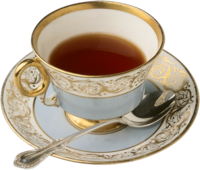
Growing up in England, tea is a great deal more than a drink.
Always drunk hot, of course. No normal person would want it served cold.
It is a major social lubricant and is considered by most to be a separate food group. And the health benefits conferred by a nice cup of tea are now known to just about everyone in Britain.
But from an early age I knew that one day I would have to leave the country.
Why?
Because I could never abide the way in which the vast majority of tea drunk in England is destroyed by the addition of milk and sugar. There are even long technical debates about whether to add the milk before pouring in the tea or after? How fast to add the white stuff? How to stir it in?
Since I was knee high to a puppy I was always the odd one out, wanting nothing to do with this wanton destruction of a sublime beverage.
Which should always be enjoyed au naturel. The only thing that might ever sully a cup of fine Earl Grey or Darjeeling might be a little lemon. Anything else?
Yuk.
Well, it now transpires that this isn’t just a matter of taste buds.
A study just published in the European Heart Journal says it all in the title, “Addition of milk prevents vascular protective effects of tea.”
Tests on sixteen healthy postmenopausal female volunteers showed that black tea significantly improved the ability of the arteries to relax and expand, but adding milk completely blunts the effect. The research was supplemented by tests on rat blood vessels. Tea caused the muscle in the vessel wall to relax by producing nitric oxide from the endothelial cells that line blood vessels. Adding milk blocked the production of nitric oxide and the relaxation of the muscles.
Now bear in mind that they were testing black tea. The researchers are now looking at the potentially more potent green tea to see whether its effects are also blocked by milk.
The villain of the piece is a group of proteins called caseins, which they found interacted with the tea to decrease the concentration of catechins in the beverage. Catechins are the flavonoids in tea that mainly contribute to its protection against cardiovascular disease.
The moral of the story? Tea can be wonderful on so many levels. Not only does it taste good, but also it can do wonders for your health.
But please, please, please don’t lose all the benefits by sloshing in a load of milk!
Raw, naked tea is the way to go…
“Thank God for tea! What would the world do without tea? How did it exist? I am glad I was not born before tea.”
–Sydney Smith (English Clergyman and Essayist, 1771-1845)







